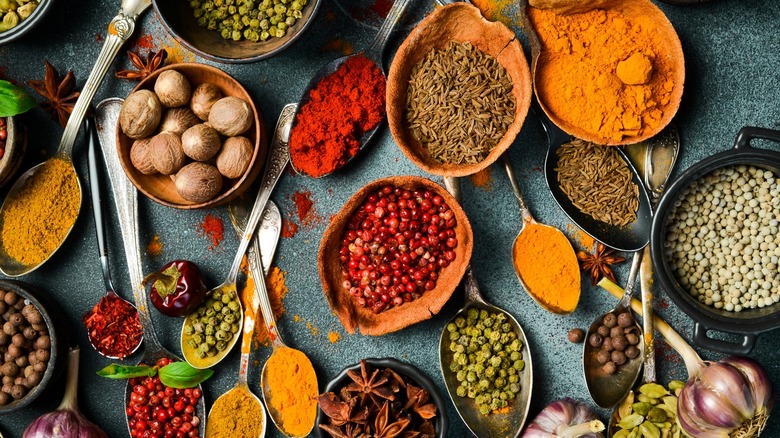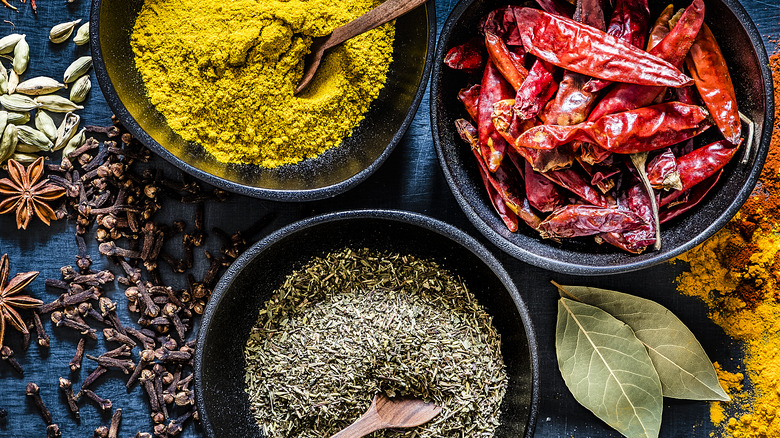Avoid Overusing This Spice When Making Indian Food
Whether you're following a recipe online or eating out at a restaurant, it's hard not to see how integral turmeric is to Indian cooking. The earthy spice has a musky and smoky taste, almost like mild black pepper encountering a wisp of ginger. It releases a delicate fire into food, but can overtake a dish when used in abundance. Although we can't imagine eliminating our consumption of the golden spice, one expert believes turmeric shouldn't be overused.
Out of all the delicious Indian dishes you have to try at least once, newbies to the cuisine tend to reach for curries and dals that are rife with turmeric. However, to celebrity chef Varun Inamdar, Indian food is more than just that one prevalent spice. "Turmeric is the most used and abused spice universally. We push everything onto the goodness of curcumin," he says. Generally, he thinks turmeric should be used moderately, and we can't help but agree. Too much of the earthy spice can cause food to taste bitter, and there are other worthy options that should be explored.
Inamdar also has a hot take on how often red chili is put to use. "Indian food is associated with heat," says the chef, although he believes that stereotype isn't always true. "Indian food cannot be generalized." While we'll forever love fiery foods such as rogan josh or pork vindaloo, more subdued dishes like creamy and fragrant chicken korma and curried black lentil soup with tadka deserve our love, too.
What other Indian spices should you use beyond turmeric?
For Inamdar, exploring the underrated regions of Indian cuisine allows you to get accustomed with more spices the country has to offer. "What is immensely popular beyond the boundaries of India is just the food from Punjab and the North West Frontier," he explains. He calls this 'popular restaurant food' but reminds us that "Indian cuisine is expansive yet regionally fiercely guarded."
Though turmeric is widely used around India, various regions have their own specialties. In Inamdar's cooking, he uses asafetida, an important component in a recipe he dedicated to his mother on his blog. A South Indian specialty, the spice comes from the root of ferula, an herb in the celery family. While it lacks that classic licorice taste that celery has, it's still extremely flavorful, offering more of a garlic-and-onions type of flavor. Asafetida is heavy on the umami, bringing a savory effect to any meal.
While North Indian foods like tandoori chicken and biryani have gained immense popularity outside the country, underrated dishes from other parts of the region aren't as well-known. Near the Himalayan mountains, Garhwali people whip up a host of delicious meals, often using jakhiya, an immensely flavorful seed. It's quite pungent and, like other Indian whole spices, gets heated in oil to deepen the taste, revealing its nutty sweetness.

